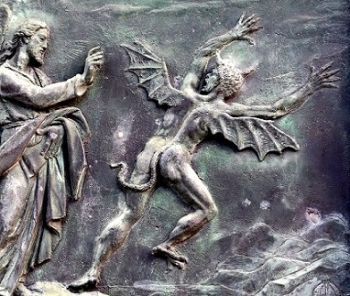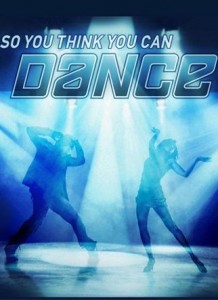 In daily Mass for Monday of the 11th Week of the Year, we read a passage from the Sermon on the Mount. It is a challenging text that raises many questions if read in a literal or absolute manner.
In daily Mass for Monday of the 11th Week of the Year, we read a passage from the Sermon on the Mount. It is a challenging text that raises many questions if read in a literal or absolute manner.
You have heard that it was said, ‘An eye for an eye and a tooth for a tooth.’ But I say to you, offer no resistance to one who is evil. When someone strikes you on your right cheek, turn the other one to him as well. If anyone wants to go to law with you over your tunic, hand him your cloak as well. … You have heard that it was said, ‘You shall love your neighbor and hate your enemy.’ But I say to you, love your enemies, and pray for those who persecute you … (Matt 5:38-44).
What a text. It seems to preclude self-defense! What does it mean to “offer no resistance to one who is evil”? Jesus does not say that one should not defend oneself if attacked; He says that one should turn the other cheek. Is this a call to radical pacifism? Does this mean that a nation should have no police force, no judicial system, no army? So radical does this text seem to most that they are overwhelmed and simply turn the page.
Instead of turning the page, though, we might do well to reflect on its message:
The text seems to be more about offenses against personal dignity than physical attack. It is true that a strike on the cheek is physical, but in the ancient world such acts were understood as an attack on personal dignity rather than a grave physical threat. This is the case even today. Being slapped in the face is not a devastating threat to physical well-being; it is an insult. In the ancient world one who wished to humiliate a person struck the person’s left cheek with his open right hand. For the one struck, this was an indignity to endure, but not the worst one that could be inflicted. The worst insult that could be given was striking the right cheek of a person with the back of one’s right hand.
So, what Jesus is describing in this passage is more a question of dignity. His basic teaching is that if someone tries to rob you of your dignity (by a slap on the cheek), realize that your dignity does not come from what others think of you; it is given by God and no one can take it from you. Demonstrate your understanding of this by offering your other cheek. Don’t retaliate to “regain” your dignity. The one who struck didn’t give you your dignity and cannot take it away from you. To retaliate is to enter the world of the one who insulted you. Stand your ground; do not flee, but do not become like the one who insulted you.
This text is not about defending oneself from life-threatening physical attack; it is a text about personal dignity. Wanting to get back at others because they offended you, or did not praise you enough, or poked fun at you, or did not give you your due; all of that ends because it no longer matters to you—at least not when Jesus starts to live His life in you.
So, this text has a cultural context that does not necessarily require us to interpret Jesus’ words as an absolute exclusion of legitimate self-defense in moments of serious physical threat.
Any distinctions I have made above by way of explanation should not remove the core of Jesus’ message, which is meant to limit retaliation and remove from it anything “personal” other than the protection of one’s life from imminent threat or significant injustice.
This reflection serves as background to the Church’s careful and thoughtful approach to the subject of necessary self-defense. The Catechism of the Catholic Church sets forth this teaching as part of its exposition on the 5th Commandment (Thou Shalt Not Kill). Here are some excerpts:
The legitimate defense of persons and societies is not an exception to the prohibition against the murder of the innocent that constitutes intentional killing. “The act of self-defense can have a double effect: the preservation of one’s own life; and the killing of the aggressor … The one is intended, the other is not” (CCC #2263).
Love toward oneself remains a fundamental principle of morality. Therefore, it is legitimate to insist on respect for one’s own right to life. Someone who defends his life is not guilty of murder even if he is forced to deal his aggressor a lethal blow: If a man in self-defense uses more than necessary violence, it will be unlawful: whereas if he repels force with moderation, his defense will be lawful … Nor is it necessary for salvation that a man omit the act of moderate self-defense to avoid killing the other man, since one is bound to take care of one’s own life than of another’s (CCC #2264).
Legitimate defense can be not only a right but a grave duty for one who is responsible for the lives of others. The defense of the common good requires that an unjust aggressor be rendered unable to cause harm. For this reason, those who legitimately hold authority also have the right to use arms to repel aggressors against the civil community entrusted to their responsibility (CCC #2265).
The efforts of the state to curb the spread of behavior harmful to people’s rights and to the basic rules of civil society correspond to the requirement of safeguarding the common good. Legitimate public authority has the right and duty to inflict punishment proportionate to the gravity of the offense. Punishment has the primary aim of redressing the disorder introduced by the offense. When it is willingly accepted by the guilty party, it assumes the value of expiation. Punishment then, in addition to defending public order and protecting people’s safety, has a medicinal purpose: as far as possible, it must contribute to the correction of the guilty party (CCC #2266).
Assuming that the guilty party’s identity and responsibility have been fully determined, the traditional teaching of the Church does not exclude recourse to the death penalty, if this is the only possible way of effectively defending human lives against the unjust aggressor. If, however, non-lethal means are sufficient to defend and protect people’s safety from the aggressor, authority will limit itself to such means, as these are more in keeping with the concrete conditions of the common good and more in conformity to the dignity of the human person. Today, in fact, as a consequence of the possibilities which the state has for effectively preventing crime, by rendering one who has committed an offense incapable of doing harm—without definitely taking away from him the possibility of redeeming himself—the cases in which the execution of the offender is an absolute necessity “are very rare, if not practically nonexistent” (CCC #2267).
All citizens and all governments are obliged to work for the avoidance of war. However, “as long as the danger of war persists and there is no international authority with the necessary competence and power, governments cannot be denied the right of lawful self-defense, once all peace efforts have failed (CCC #2308).
The strict conditions for legitimate defense by military force require rigorous consideration. The gravity of such a decision makes it subject to rigorous conditions of moral legitimacy. At one and the same time:
- the damage inflicted by the aggressor on the nation or community of nations must be lasting, grave, and certain;
- all other means of putting an end to it must have been shown to be impractical or ineffective;
- there must be serious prospects of success;
- the use of arms must not produce evils and disorders graver than the evil to be eliminated. The power of modern means of destruction weighs very heavily in evaluating this condition.
These are the traditional elements enumerated in what is called the “just war” doctrine (CCC #2309).
Thus, self-defense and the ending of unjust aggression should never be something we do lightly or without reflection. The Lord and the Church require of us serious reasons for bringing lethal blows even to enemies; we should never undertake such measures without considering carefully other less-extreme responses. Respect for life means that I can demand my enemy respect my life, but also means that I must respect his. Recourse to war or other lethal measures may sometimes be necessary, but we must examine our motives and carefully consider alternative methods.
Finally, recall that the Sermon on the Mount is not a list of moral rules that we are expected to follow with the power of our own flesh. Rather, they are a description of the transformed human person. They describe what a person is like when the Lord lives in him and transforms him by His grace. The transformed person is not excessively concerned with personal dignity. The world did not bestow dignity and thus cannot take it away. The transformed person is not concerned with getting back at those who have inflicted blows against their dignity; He is content to be in God’s favor and increasingly free of vainglory, the excessive desire for human praise and standing.




